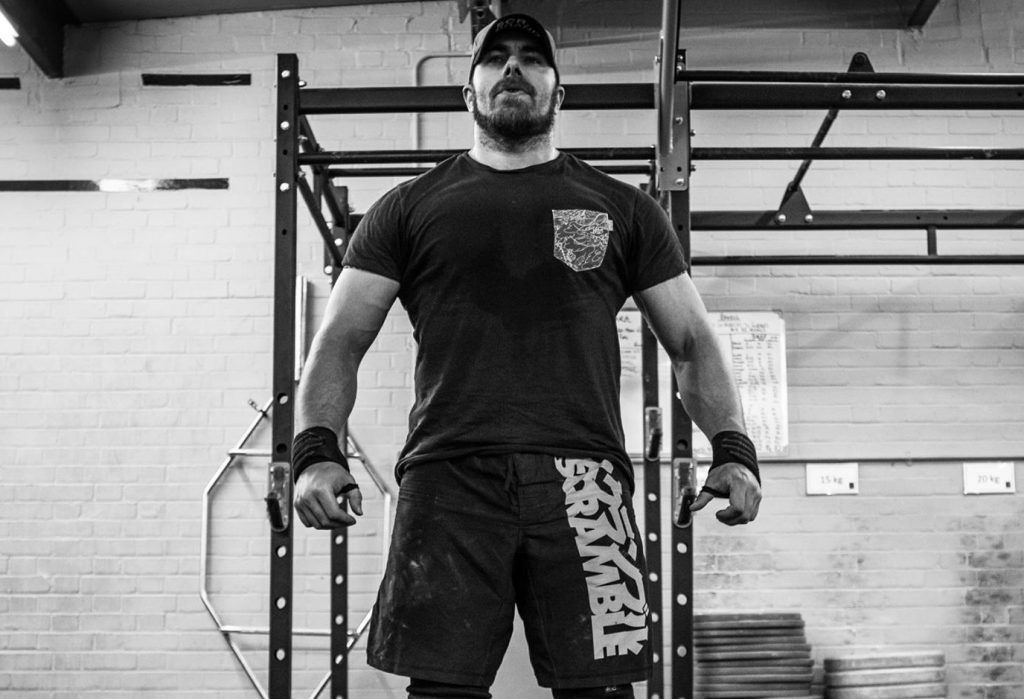Guest post from William Wayland, of Powering Through Performance Centre.
A question I’m often asked is my recommended workout requiring no equipment. I often get it from Golf pros looking for hotel room-based solutions for training, but also travelling grapplers and or those training in remote locations with no gym available. A lack of equipment is little reason not to implement a good progressive training session. The point here is to avoid the same overdone prescriptive approach and empower YOU to build something that will work for YOU.
How to structure a session
- Jumps – Vertical Jumps – Bounds – Skips etc
- Lowerbody – Hinging and Squats
- Push/Pull – Press-ups –Chin-ups-Rows etc
- Extras – Core – Hamstrings- Grip
Jumps are always something that, for the grappler, fall into ‘general physical capability’ – it’s nice to have but being great at it isn’t entirely crucial to the sport. Listed from entry level to hardest, movement skills like vertical jumps, counter movement jumps, broad jumps, single leg split squat jumps and kneeling jumps can be useful to employ at the start of a session. Why at the start? Well, this is where the most neurologically demanding work should go during a session. It is also the reason why we keep the reps low to focus on quality.
The humble push-up done properly can be a full body exercise with enormous scope. Done properly it includes core and glute co-activation. The other advantage is the proper shoulder and scapular positioning that a good push-up demands is something worth investing in over, say, jumping straight to a bench press.
Single leg work: Lower body training is easily achievable with some creative thinking. This includes a variety of hinges and squats that can be performed with no equipment. The bodyweight squat for most is easy but should still be invested in. Once you can do a decent bodyweight squat many often suggest the pistol squat but this is often far too much of jump for many, especially those of the heavier persuasion, this a good option lies in step downs and eccentric partials until good mechanics are established.
The Posterior chain requires working on hip hinge both standing and laying positions. The trick is first making sure you have good hip hinge mechanics with two legs before moving onto two legs. The Single leg BW RDL, is a great place to start before progressing into glute wind ups. In the laying position, master good hip position and extension before moving onto the single leg hip thrust and then explosive single leg hip bridging which has plenty of potential transfer to grappling sports.
Exercises for the upper posterior are trickier as these often require external load, things like rings or pull-up bars can be enormously useful. Again positioning can be trained initially with no load prone IWT. While chin-ups and pull-ups may seem like a given for some, others will have to start with things like iso holds – bent arm hangs and eccentric only pulls to build up the capacity to do full movements. Horizontal pulling is probably the trickiest element to employ without equipment, but a low bar can allow for the implementation of supine rows and other variations.
Extras for my athletes usually pertain to things like core strength, grip and neck training all essentials for collision sports athletes and all work investing time in. Core strength in this case is referring to ability to brace effectively, as grapplers often flex, twist and rotate plenty during the course of training. As a starting point I encourage athletes to practice the skill of bracing, this takes form of passive and active planks, planks plus movement.
Neck work requires a little more creativity: a band or a towel or partner added resistance can be very useful. Grip Training can take form of simple dead hangs, two on one hangs and active grip switching. Or if you have a pair of Scramble Grip Trainers these can employed; I know yes they count as equipment but they are seriously useful.
Sets & reps will often come in the form of charts for suggest rep ranges, but without equipment this has little meaning if for example you can do 20 push-ups without breaking a sweat. You could load the movement but that defeats our equipment-free ethos so the other way to attack this issue to add tempo based variations with the examples if already presented. For instance: eccentric tempos focusing on the yielding element of movement or isometric’s focus on static holds. Another way is EDT sets, where you put 10-20s on the clock and strive to complete as many reps as possible in the time slot. Just be sure to keep the reps tidy and rests reasonable.
Equipment free conditioning
Equipment free conditioning is entirely possible for instance if we borrow from the lactate GPP method I’ve posted about in the past on Scramblog. We can set the clock for 5 minutes and look to perform alternating sets of 10 reps for instance.
- Push-ups x Rows 10 x 10 for 5 mins
- Single Leg Squats alternating 10 x 10 for 5 mins
This gives both a local conditioning peripheral conditioning effect which is crucial for jiujitsu and grappling sports but also builds global conditioning as well. While I mentioned at the start that I’m trying to avoid something prescriptive here’s something I use when travelling with minimal equipment, I’ve even done this while travelling, for example in a hotel room.
⦁ Seated Jumps 5 x 3
⦁ Glute Wind-ups – RFESS 4 x 5 Each side
⦁ Push-ups / TRX Rows using door wedge 4 x 10-15
⦁ Breathing Planks
This is simple enough that I’ve committed it to memory.
We at Scramble hope you enjoy the information presented here. If so, please share this article and look out for the next post from S & C ubergeniusman William Wayland.
